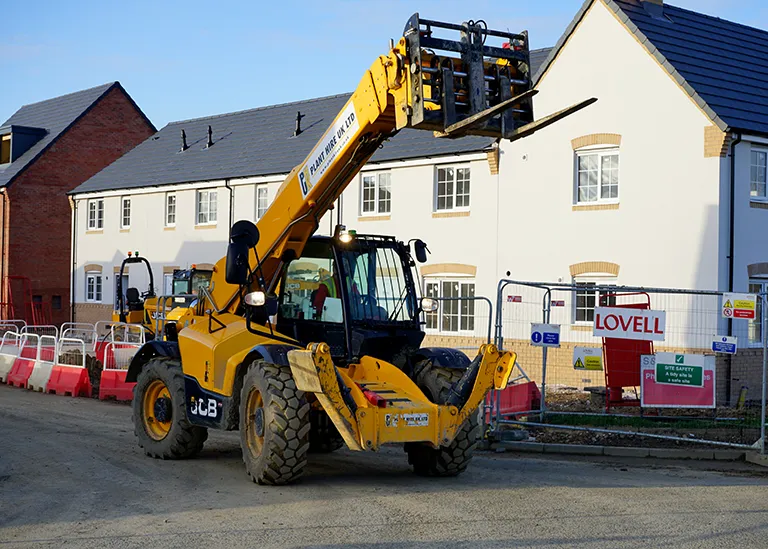Do I need a licence to drive a telehandler on the roads UK?
Our Comprehensive Guide to What is Required to Drive a Telehandler on the Road
Do I need a licence to drive a telehandler on the roads UK?
Yes, you need a driver’s licence to operate a telehandler on public roads in the UK.
Below are the specific requirements you must fulfil:
-
Driving Licence: The operator must possess a valid UK driving licence. -
Registration and Taxation: The telehandler must be registered and taxed with the Driver and Vehicle Licensing Agency (DVLA). You can check the current vehicle tax rates on the DVLA’s website. -
Insurance: Ensure you insure the telehandler for road use. Your personal or company vehicle insurance policy might cover this. -
Competence and Training: The person behind the wheel should be competent in operating the telehandler and familiar with the operator’s manual.
Ticket Requirements for Construction Sites
If you’re using the telehandler on a construction site, you’ll need an NPORS or a CPCS Telescopic Handler A17 Wheeled ticket. However, this is not a requirement if you’re operating on private land.
Key Takeaways for Driving a Telehandler on UK Roads
-
A valid UK driving licence is mandatory. -
The telehandler should be registered, taxed, and insured for road use. -
Operators should undergo training and be familiar with the telehandler’s operating manual. -
You need specific tickets, such as NPORS or CPCS Telescopic Handler A17 Wheeled, to operate on construction sites, but you don’t need them on private land.

If you enjoyed our “Do I need a licence to drive a telehandler on the roads UK?” answer, you might find our article on What is the difference between a forklift and a telehandler?” interesting.
We’ve Answered a Few Telehandler Questions for You.
Will I need plant hire insurance when hiring a telehandler?
Yes, you will need to purchase a plant hire insurance policy to cover the equipment you are hiring.
The hirer is responsible for the hired in telehandler from the moment it is delivered to you or collected from the hirer’s premises.
Additionally, you must store hired telehandler equipment safely and securely for the duration of the hire contract.
In the event of theft or damage to your hired in plant, you should contact your insurer and the plant company immediately. If the plant is stolen you should also report the incident to the police.
How tall is a 17-metre telehandler?
A 17–metre telehandler is approximately 5.6 metres tall. The overall height of a JCB 540-170 telehandler is 2.69m which does not take flashing beacons into account, which are usually located on the top of the cab.
| JCB 540-170 | Dimensions |
| Overall Height | 2.69m |
| Overall Width | 2.44m |
| Length to Carnage | 6.36m |
| Ground Clearance | 0.4m |
| Turn Radius | 4.10m |
| Wheelbase | 2.75m |
| Weight | 12060kg |
| Maximum Payload | 4000kg |
| Maximum Lift Height | 16.7m |
| Lift capacity to full height | 2500kg |
| Lift capacity at full reach | 800kg |
| Placing Height | 11.7m |
| Reach at maximum lift height | 1.97m |
| Fuel Type | Diesel |
| Fuel Tank Capacity | 146L |
| Noise Level | 75LP(A) |
| Tyres | 5.5/80-24 |
*Dimensions are subject to change.
Visit JCB’s website.
How much does telehandler hire cost to hire?
The cost of hiring a telehandler depends on the size of the telehandler, the length of the contract, and delivery and insurance costs. The weekly rate of a telehandler starts at roughly £250.00 per week, excluding, fuel, insurance delivery, and operator costs.
What model of telehandler will I need to hire?
You will need to consider the job or range of jobs the telehandler will be used for, the lifting height needed, the weight of loads to be moved, and the ground surface of the work area.
If you are unsure, your plant hire company can recommend the most appropriate equipment for the application and conditions.
Do I need to hire additional telehandler attachments?
No, usually not, as you commonly will not need to hire additional telehandler attachments for most basic lifting and carrying duties.
However, crane jib attachments can be useful for particularly heavy loads, distributing their weight more evenly and buckets are useful for moving loose loads of aggregates.
Plan ahead of time and understand your site requirements, as the correct telehandler attachment can save you both time and money.
There are many reasons to hire a telehandler rather than a traditional forklift or skid steer loader.
Telehandlers are versatile and can easily perform the roles of both machines and more. They can easily place and retrieve loads at heights greater than either.
Telehandlers are more maneuverable and can work on a multitude of surfaces and travel by road. Their three steering modes allow normal two-wheel drive, turning in tight circles and driving sideways into confined spaces.
Combined with a wide variety of attachments, telehandlers are suited to more roles on-site, than almost any other piece of plant machinery.
Download Our Free Daily Telehandler Checklist
